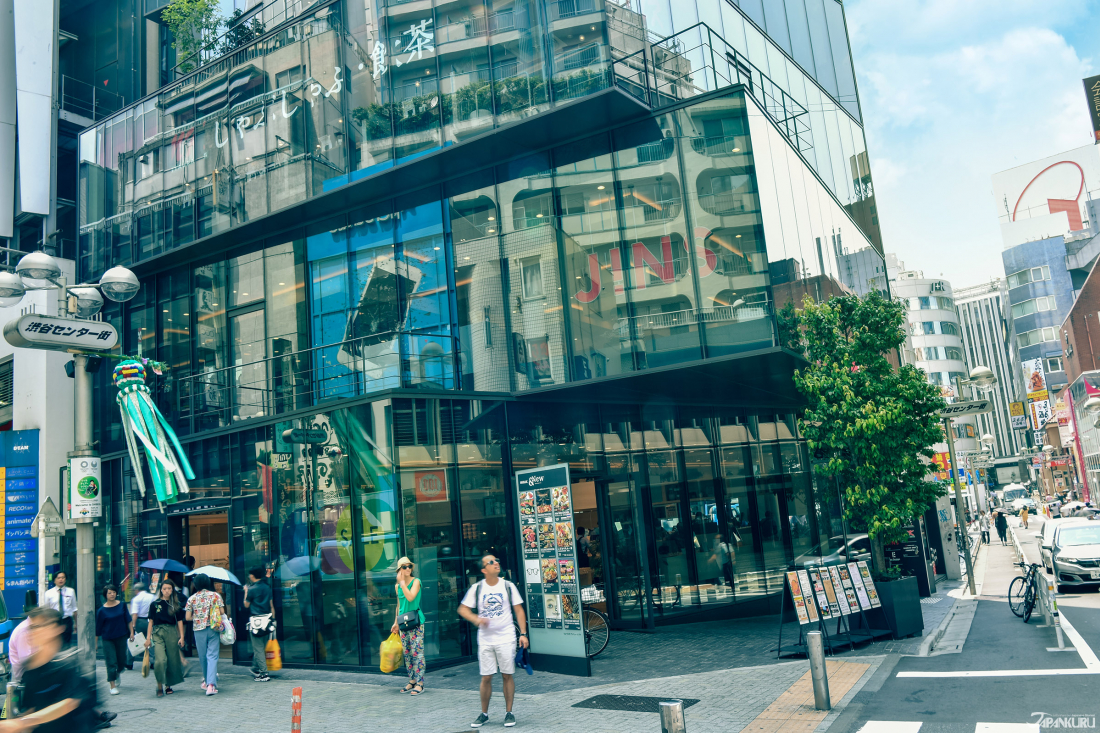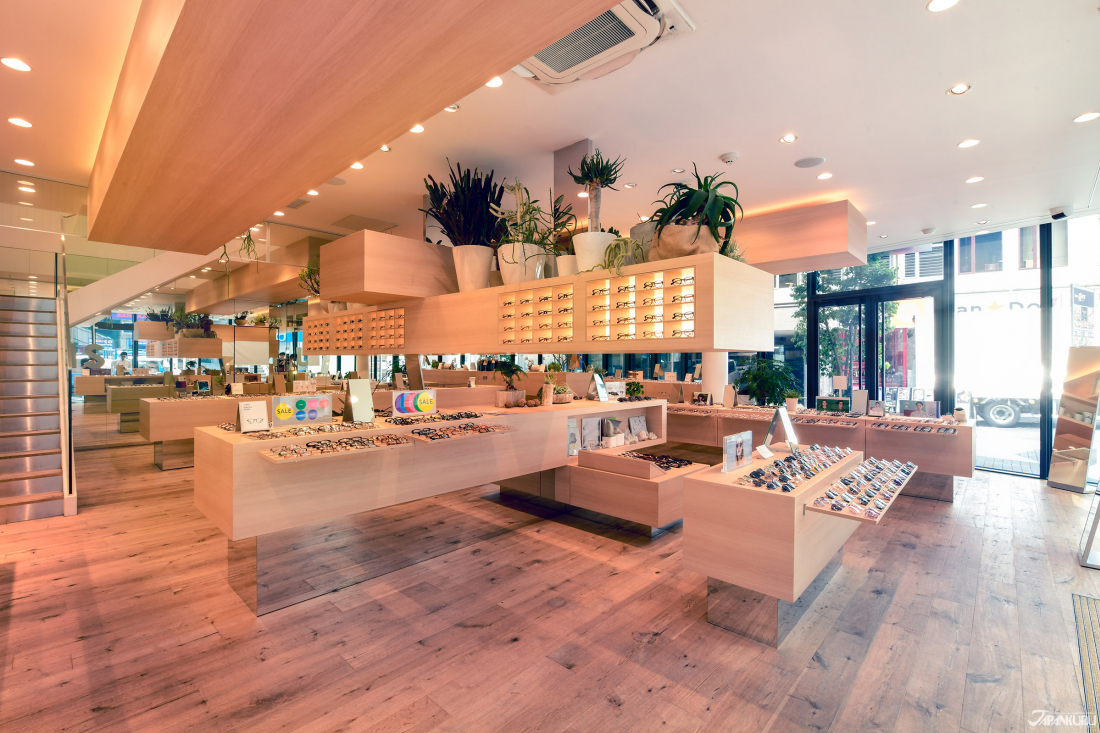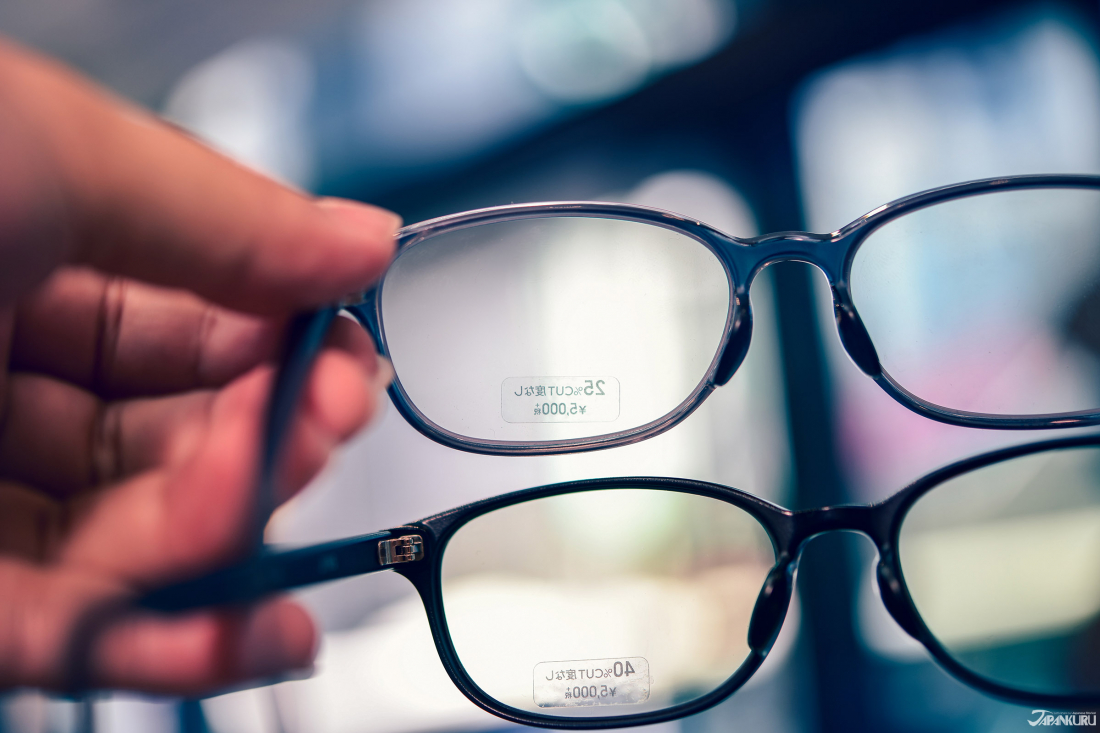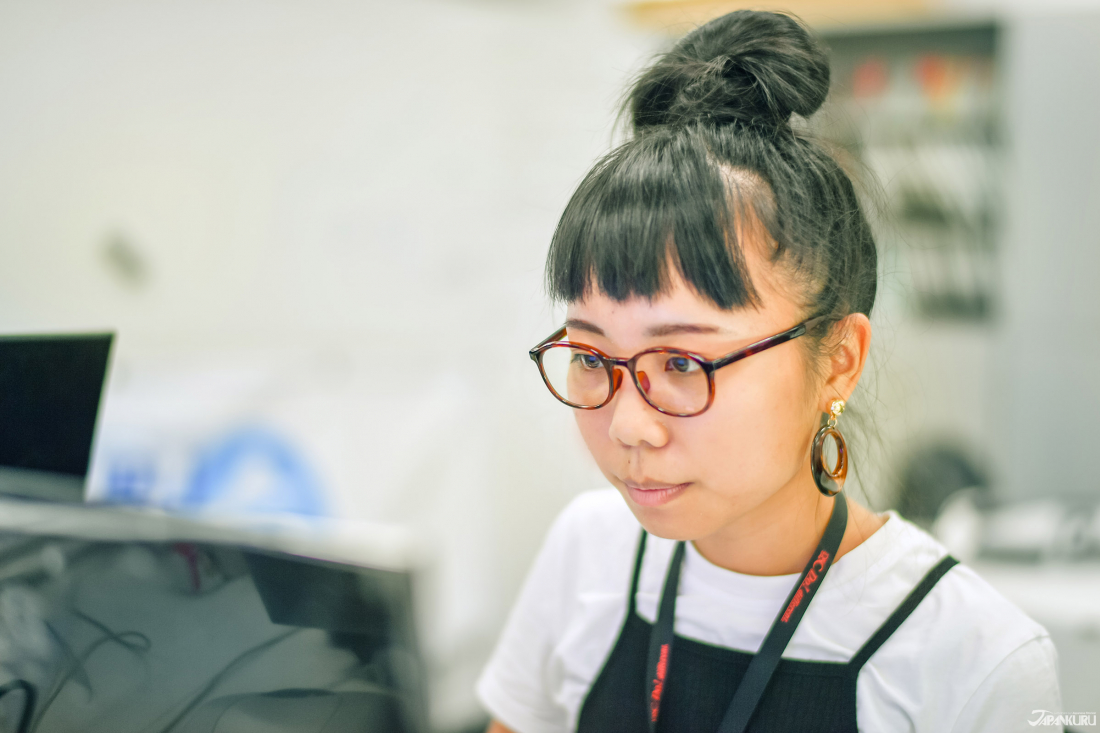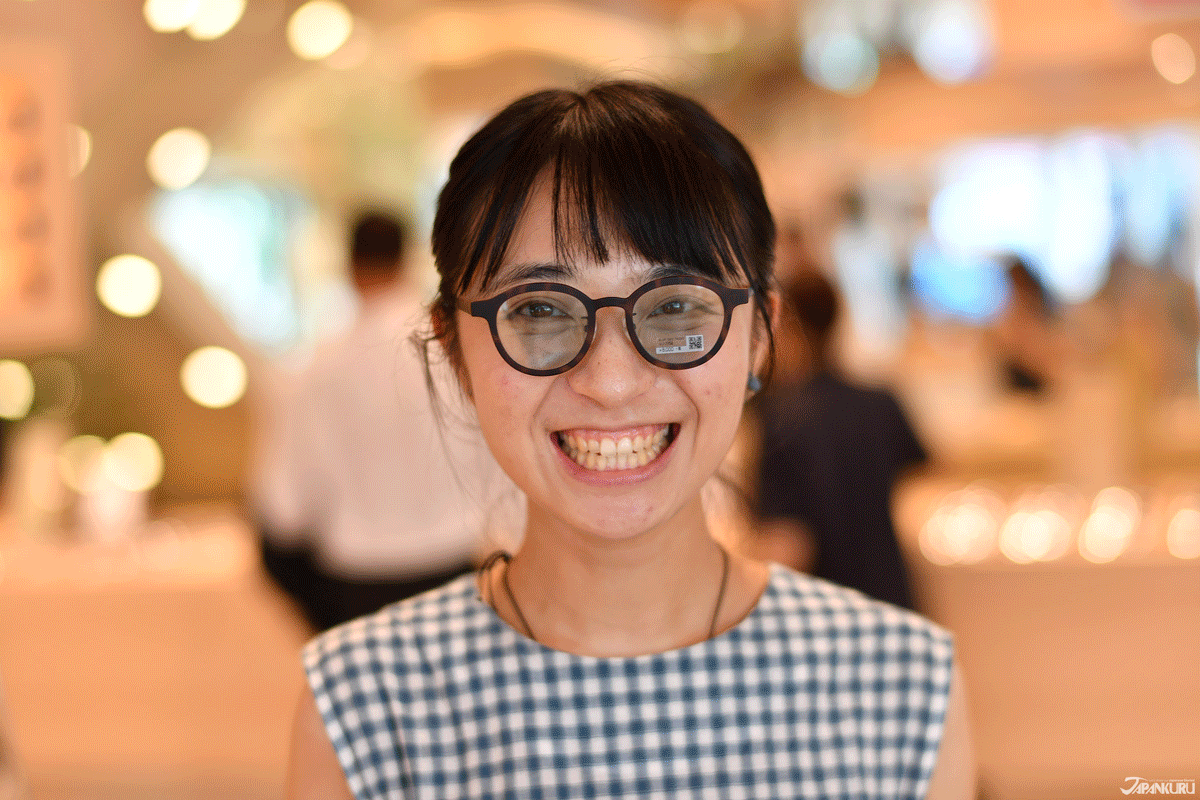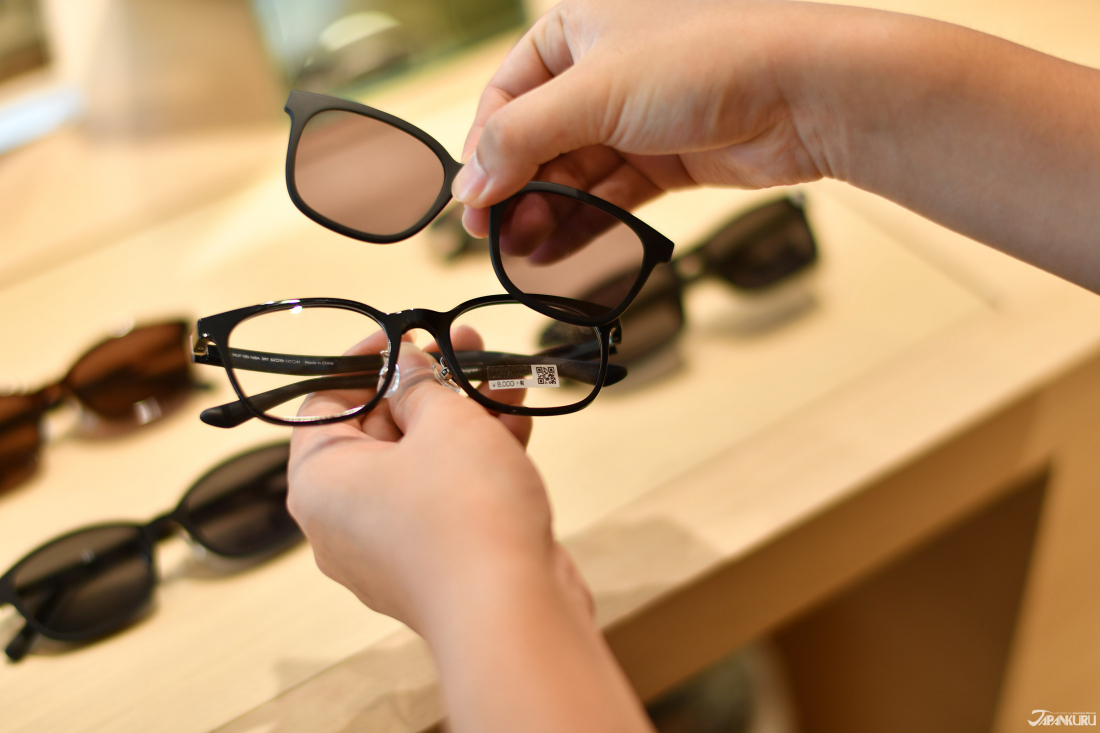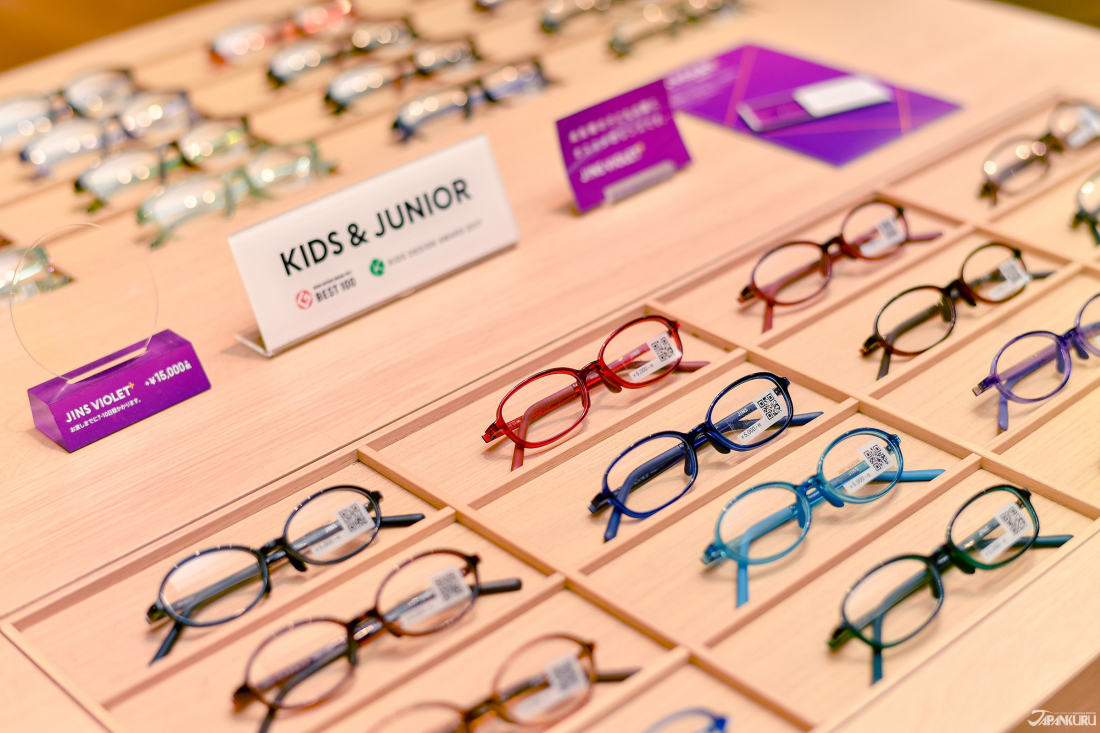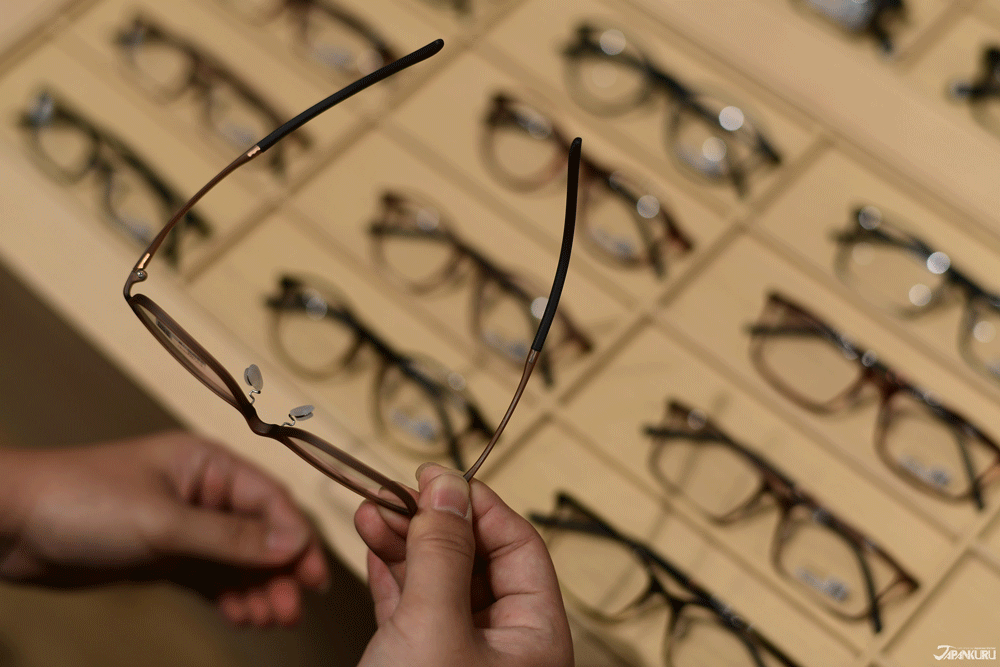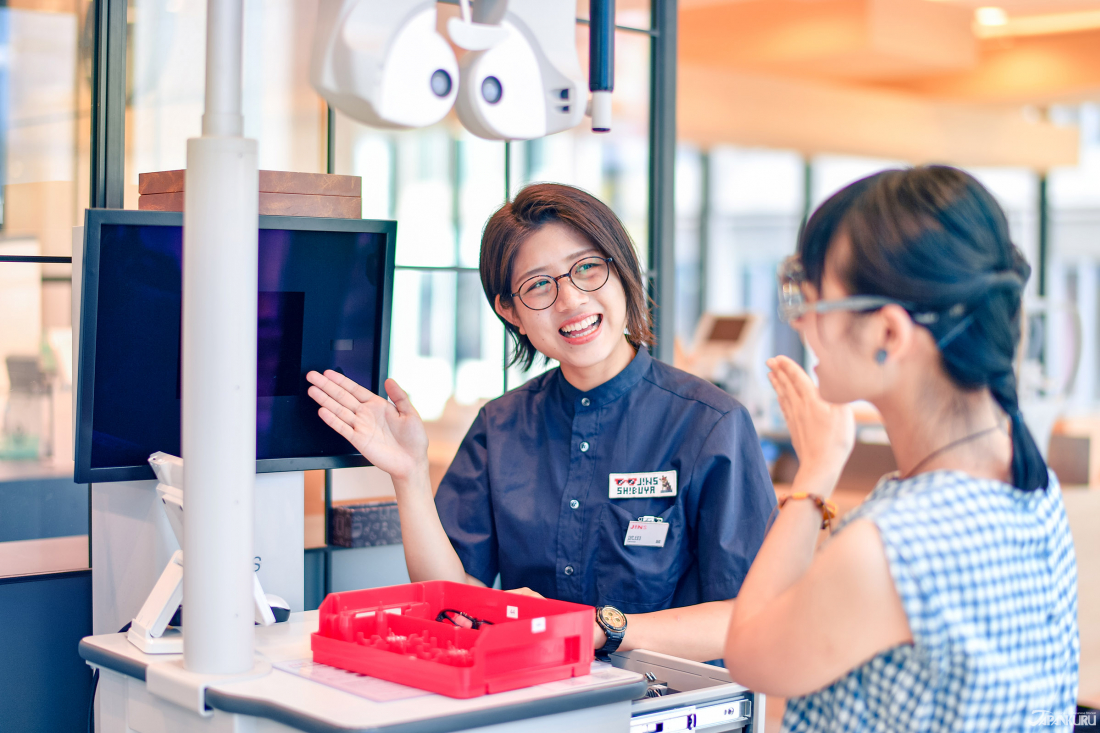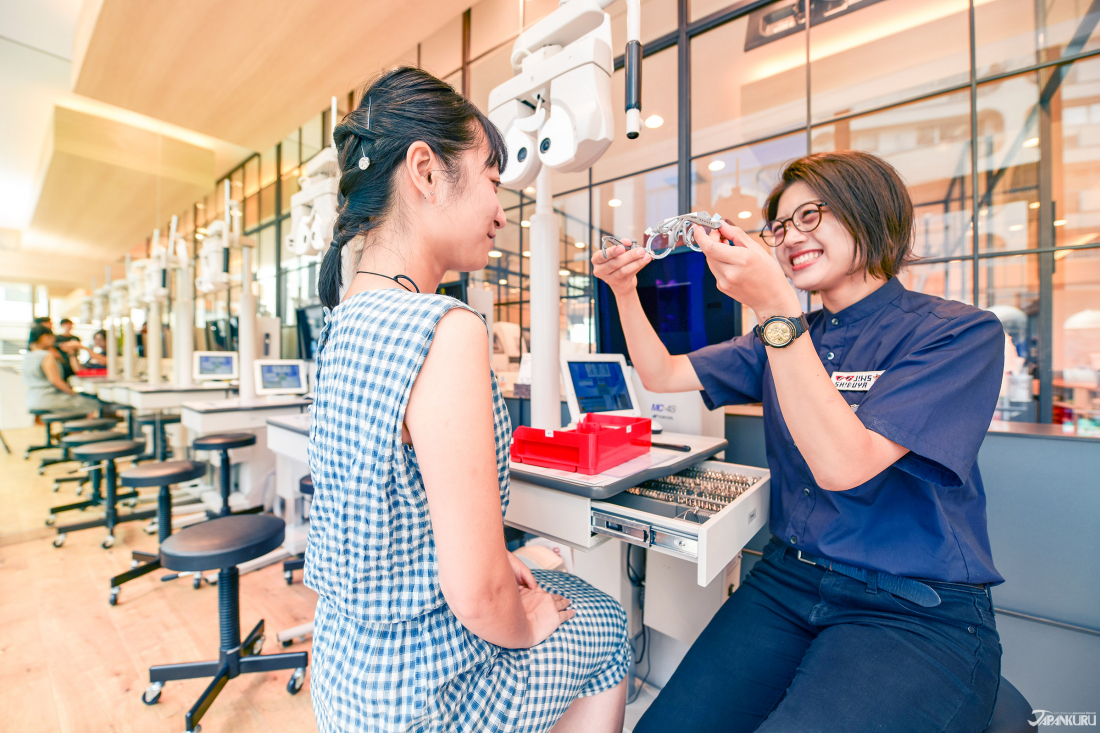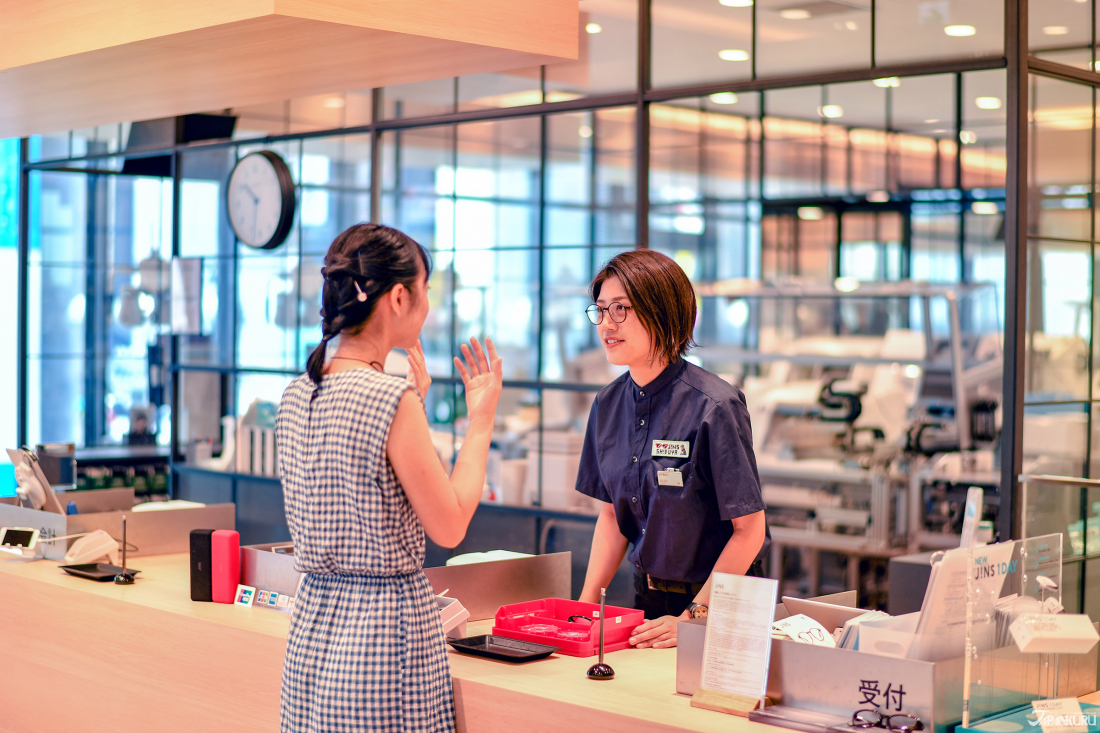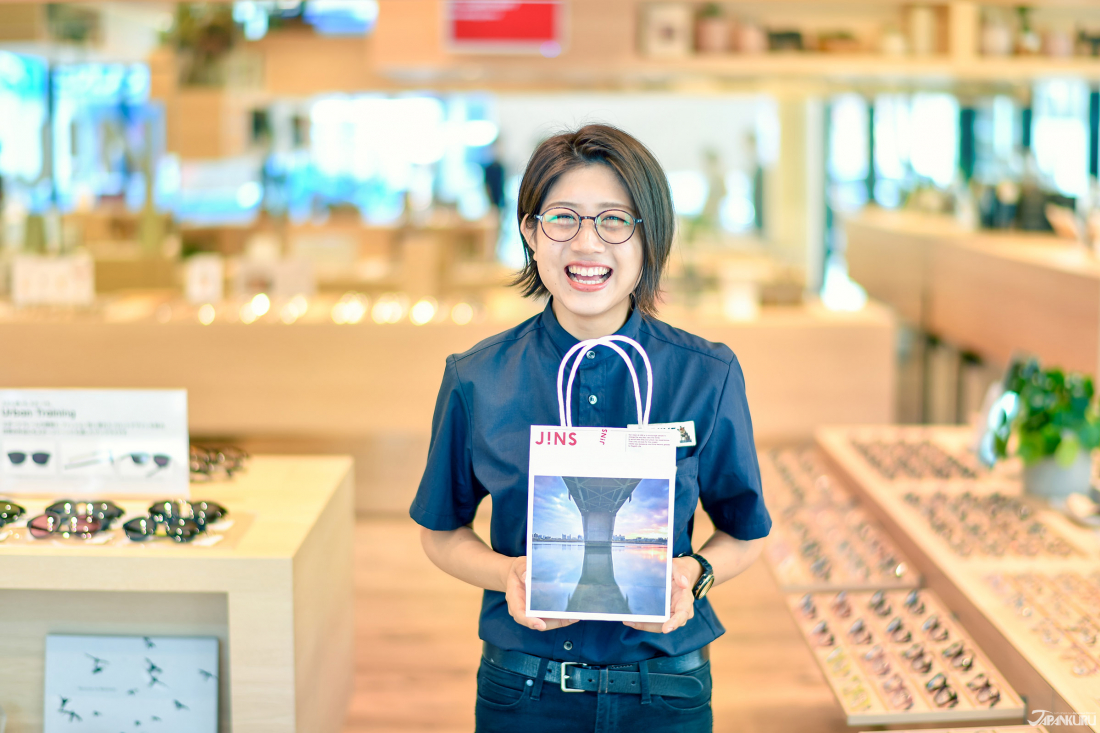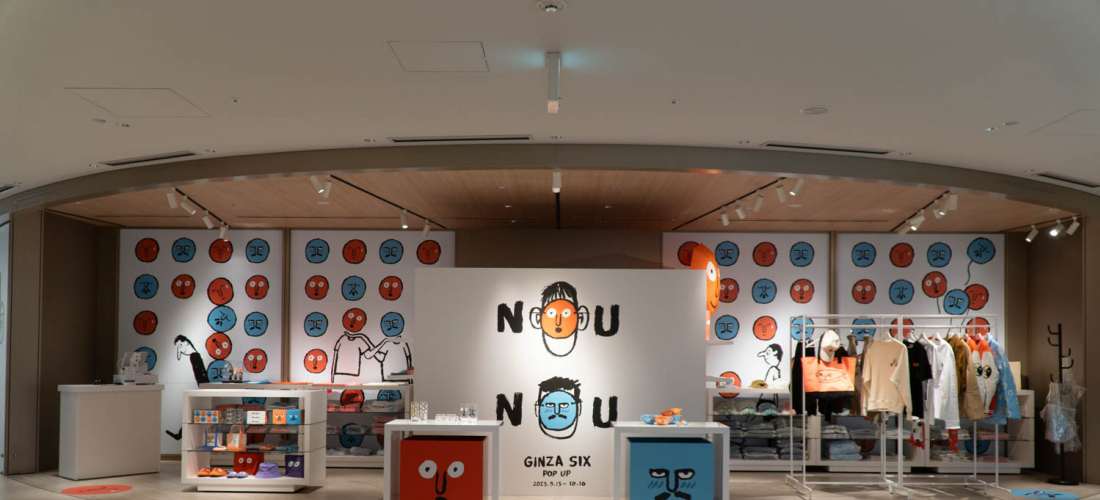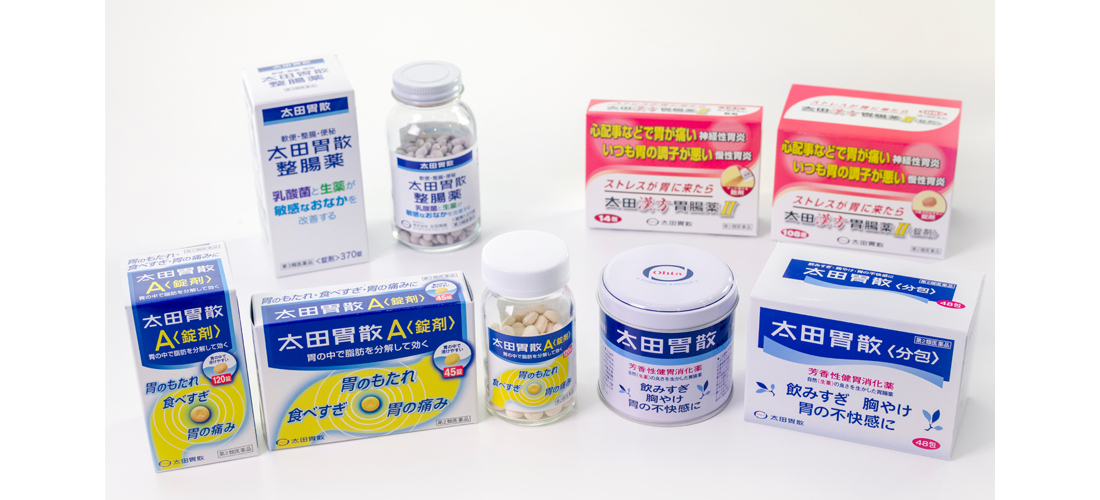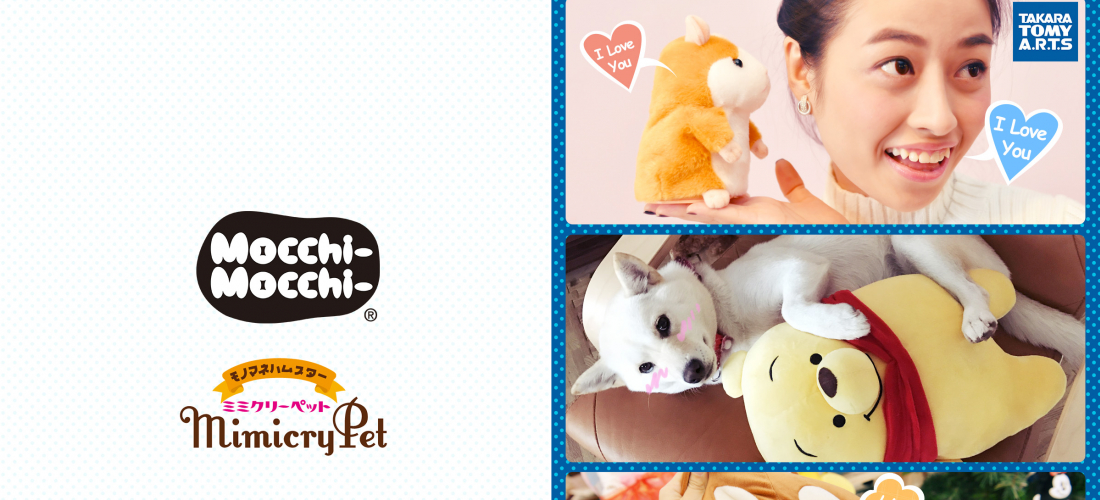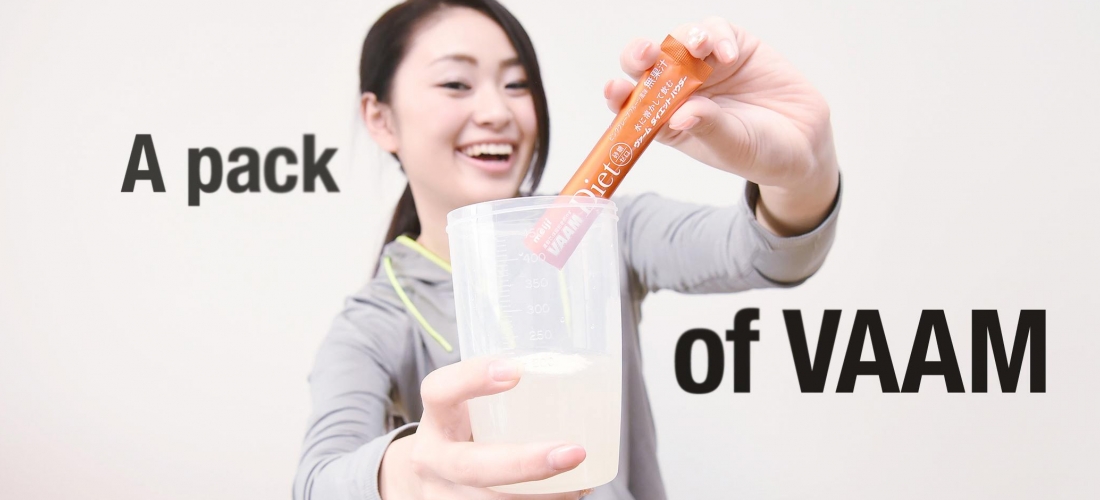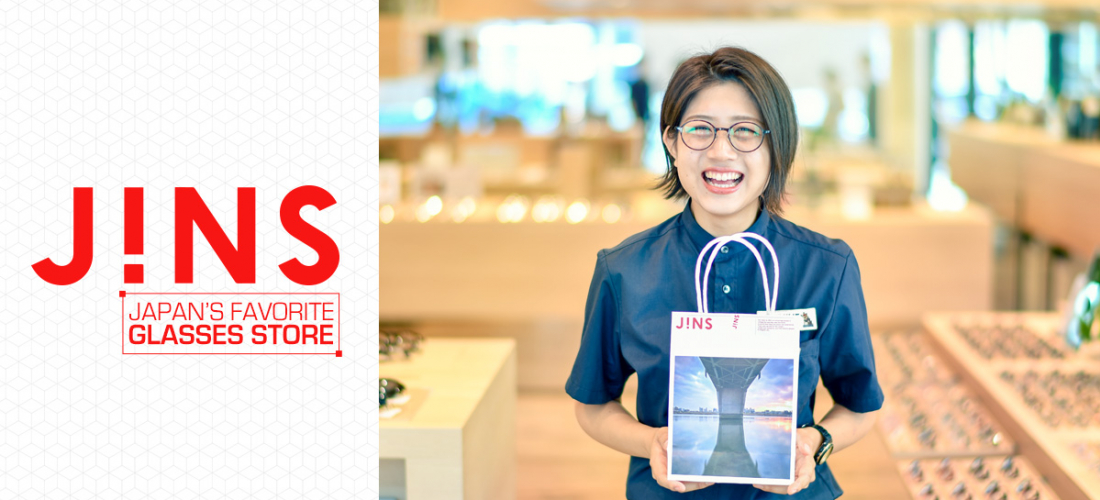
CONTENTS
Living in the digital age, glasses have become a must-have item for everyone. Some use glasses for vision needs, some for fashion, and some people even choose to wear glasses for eye protection to not further harm their eyes. In recent years, Japanese affordable eyewear brands have moved overseas, such as JINS, OWNDAYS, etc.. Focusing on parity, Japanese design and fast optician, are starting to attract the attention of many eyewear groups. However, if you come to Japan, you may be surprised at how many people still want to experience a complete "Japan Optician Service". This time, JAPANKURU went the JINS Shibuya Branch and was able to find some interesting discoveries while shopping for some new glasses.
Giant Glasses Shop in the Center of Shibuya Center-Gai
The JINS store in the Shibuya area has 2 floors. The design of the store is designed by the architect Sou Fujimoto. It is mainly decorated with simple and clean original wood. Through three-dimensional design, visitors can come from different angles and see different expressions in the store. With a large floor-to-ceiling glass window, it is blended with Shibuya's streets, with the mirror projection on the inside walls of the store, making the store look more open. The second floor of the store is not only an optometry and glasses production area but also has a wide exhibition space. From time to time, they prepare some art exhibitions so many people come here not only to buy glasses, but also to check out some current trends.
Along Inokashira Dori, JINS Shibuya is next to Mandarake Shibuya and diagonal from Tokyu Hands Shibuya.
The Best Combination of World Optical Quality and Japanese Popular Design
Most of JINS's eyewear products use thin aspherical lenses from Essilor and HOYA, the world's optical manufacturers, to overcome the distortion of the field of view. The thin and light lenses are matched with all kinds of frames designed in Tokyo giving you practical, beautiful, and stylish glasses. According to the different occasions and needs of everyone, JINS has developed a variety of different functional lenses. The products include the classic series "JINS SCREEN" for anti-blue light glasses protection, the "JINS Switch" series with a clip-on sunglasses concept. Then finally the latest "JINS VIOLET+" series that goes beyond blue light protections.
JINS has developed a variety of different functional lenses according to the different occasions and needs of everyone.
Whether we like it or not, blue light is surrounding us more and more. The light with a wavelength of 380-495nm is the most energetic light in visible light, and has a high penetration rate to the glasses. Long-term contact damages retinal cells and crystals, thereby increasing macular degeneration. Therefore, anti-blue light glasses have become an inevitable increase in the number of people who require glasses. Even those with perfect eyesight are starting to buy a pair.
In response to this demand of modern people, JINS launched the anti-blue light SCREEN series, which includes 25%, 40% and 60% anti-blue light lenses that are suitable for general daily use. As for the highest level of 60%, it is designed for those who use electronics before going to bed which can effectively reduce and impact how well one sleeps.
JINS has launched the anti-blue light SCREEN series, which includes 25%, 40% and 60% anti-blue light lenses.
The 25% anti-anti-blue light lens is different from the 40% lens, which is has a more yellow tint than the 25%.
According to how much you use electronics a day, you can choose different levels of anti-blue light glasses or lenses.
Maybe 5 years ago, sunglasses in Japan weren't very popular. Now more and more people are starting to wear them which has brought Japan to creating many new designs. Currently, sunglasses where the lenses flip up turning into regular lenses are everywhere. Following the similar idea, JINS has developed a detachable sunglasses series "JINS Switch", which makes it easy to attach or detach lightweight sunglasses with the special magnetic design of the frame. This type of frame is available in a variety of styles, including vintage round, classic square, plain, and floral options.
It really is as simple and convenient as it looks!
Using a magnet suction design, the glasses change into sunglasses, and vice versa, in a single second!
Protection from Not Only Blue Light but Uvb and Uva
This series is a new type of lens developed by JINS based on new medical research. UV rays have higher energy than visible light rays, which makes them capable of producing changes in the functioning of your eyes. These glass lenses can preserve the wavelength of 360-400nm light while filtering blue light and ultraviolet light, which can effectively help children to suppress the increase of nearsightedness.
As a brand of glasses, JINS also regards the protection of children's vision as their own responsibility, developed the JINS VIOLET+ series of lenses, designed a frame suitable for children. It allows light to be preserved when filtering out blue light and ultraviolet light, which is good for children to help prevent nearsightedness.
In addition to these three series of products, there are many different design style frames in JINS Shibuya, such as the recent frame series with the stationery brand PAPIER TIGRE.
Being so light, the frames aren't stiff like other fashion glasses.
Getting Your Glasses Is Simple and Quick! Get it within 30mins!
With JINS having many stores overseas, it is likely that many of you have been there before. If you haven't, you don't need to be nervous. It's such an easy process and takes no time at all.
JINS has a variety of frames to choose from. Most general frame with ordinary lenses cost 5000yen (excluding tax). If you want to add special features of the lens, it is an added 3000 to 5000yen. After deciding, go to the counter to check out!
Since there are so many foreigners that come to JINS to buy glasses, JINS changed the eyesight chart to a more user-friendly one. Japan normally uses circles and you have to say which side of the circle is open (left, right, up, or down). However, only at JINS do they do they roman alphabet!!! It makes things SO much easier!! They have multilingual staff too so there is no need to worry about a language barrier.
When the clerk has all the information needed, the frame and lens selected will be placed in a small red box for the customer for confirmation.
If what you got is in stock, the glasses can be picked up in as little as 30 minutes. Of course, it depends on the number of customers coming to the store along with the volume of the lenses used. During the waiting time, you can wander around Shibuya and come back, or you can wait in the store.
The new glasses that our of our team members chose were finished! When trying on, pay attention to whether there is any problem such as fuzziness or tightness of the frame. If there are still some adjustments needed to be made, you can tell the staff. If there is nothing wrong, you can leave with your new glasses!
👓JINS – Shibuya Branch
🏢 31-1 Udagawa-machi, Shibuya-ku, Tokyo
⏰Mon~Thurs, Sun, Holidays: 11am~9pm
Fri & Sat: 11am~10pm
JINS Official Website (Japanese)
JINS Shibuya Branch Website
JINS US Site
Be sure to look at JAPANKURU🐶 for more exciting articles every day!!
Or add us on Google+, Instagram, Facebook to share your Japanese pictures💖🗾
For a limited time only, show this Japankuru Coupon at JINS shops in Japan for a special discount! Foreign customers will not only get the 10% tax-free discount, but also an additional 5% off. The coupon is valid through August 31st, 2024, so make sure to take advantage of the discount on your next trip to Japan!
For more info and updates from Japan, check Japankuru for new articles, and don't forget to follow us on Twitter, Instagram, and Facebook!
Details
NAME:JINS
MAP
31-1 Udagawa-machi, Shibuya-ku, Tokyo
ACCESS:Shibuya Station
CONTACT TEL:03-3464-8070
COMMENT
FEATURED MEDIA
VIEW MORE 
A New Tokyo Animal Destination: Relax & Learn About the World’s Animals in Japan
#pr #japankuru #anitouch #anitouchtokyodome #capybara #capybaracafe #animalcafe #tokyotrip #japantrip #카피바라 #애니터치 #아이와가볼만한곳 #도쿄여행 #가족여행 #東京旅遊 #東京親子景點 #日本動物互動體驗 #水豚泡澡 #東京巨蛋城 #เที่ยวญี่ปุ่น2025 #ที่เที่ยวครอบครัว #สวนสัตว์ในร่ม #TokyoDomeCity #anitouchtokyodome

Shohei Ohtani Collab Developed Products & Other Japanese Drugstore Recommendations From Kowa
#pr #japankuru
#kowa #syncronkowa #japanshopping #preworkout #postworkout #tokyoshopping #japantrip #일본쇼핑 #일본이온음료 #오타니 #오타니쇼헤이 #코와 #興和 #日本必買 #日本旅遊 #運動補充能量 #運動飲品 #ช้อปปิ้งญี่ปุ่น #เครื่องดื่มออกกำลังกาย #นักกีฬา #ผลิตภัณฑ์ญี่ปุ่น #อาหารเสริมญี่ปุ่น

도쿄 근교 당일치기 여행 추천! 작은 에도라 불리는 ‘가와고에’
세이부 ‘가와고에 패스(디지털)’ 하나면 편리하게 이동 + 가성비까지 완벽하게! 필름카메라 감성 가득한 레트로 거리 길거리 먹방부터 귀여움 끝판왕 핫플&포토 스폿까지 총집합!
Looking for day trips from Tokyo? Try Kawagoe, AKA Little Edo!
Use the SEIBU KAWAGOE PASS (Digital) for easy, affordable transportation!
Check out the historic streets of Kawagoe for some great street food and plenty of picturesque retro photo ops.
#pr #japankuru #도쿄근교여행 #가와고에 #가와고에패스 #세이부패스 #기모노체험 #가와고에여행 #도쿄여행코스 #도쿄근교당일치기 #세이부가와고에패스
#tokyotrip #kawagoe #tokyodaytrip #seibukawagoepass #kimono #japantrip

Hirakata Park, Osaka: Enjoy the Classic Japanese Theme Park Experience!
#pr #japankuru #hirakatapark #amusementpark #japantrip #osakatrip #familytrip #rollercoaster #retrôvibes #枚方公園 #大阪旅遊 #關西私房景點 #日本親子旅行 #日本遊樂園 #木造雲霄飛車 #히라카타파크 #สวนสนุกฮิราคาตะพาร์ค

🍵Love Matcha? Upgrade Your Matcha Experience With Tsujiri!
・160년 전통 일본 말차 브랜드 츠지리에서 말차 덕후들이 픽한 인기템만 골라봤어요
・抹茶控的天堂!甜點、餅乾、飲品一次滿足,連伴手禮都幫你列好清單了
・ส่องมัทฉะสุดฮิต พร้อมพาเที่ยวร้านดังในอุจิ เกียวโต
#pr #japankuru #matcha #matchalover #uji #kyoto #japantrip #ujimatcha #matchalatte #matchasweets #tsujiri #말차 #말차덕후 #츠지리 #교토여행 #말차라떼 #辻利抹茶 #抹茶控 #日本抹茶 #宇治 #宇治抹茶 #日本伴手禮 #抹茶拿鐵 #抹茶甜點 #มัทฉะ #ของฝากญี่ปุ่น #ชาเขียวญี่ปุ่น #ซึจิริ #เกียวโต

・What Is Nenaito? And How Does This Sleep Care Supplement Work?
・你的睡眠保健品——認識「睡眠茶氨酸錠」
・수면 케어 서플리먼트 ‘네나이토’란?
・ผลิตภัณฑ์เสริมอาหารดูแลการนอน “Nenaito(ネナイト)” คืออะไร?
#pr #japankuru #sleepcare #japanshopping #nenaito #sleepsupplement #asahi #睡眠茶氨酸錠 #睡眠保健 #朝日 #l茶胺酸 #日本藥妝 #日本必買 #일본쇼핑 #수면 #건강하자 #네나이토 #일본영양제 #อาหารเสริมญี่ปุ่น #ช้อปปิ้งญี่ปุ่น #ร้านขายยาญี่ปุ่น #ดูแลตัวเองก่อนนอน #อาซาฮิ

Japanese Drugstore Must-Buys! Essential Items from Hisamitsu® Pharmaceutical
#PR #japankuru #hisamitsu #salonpas #feitas #hisamitsupharmaceutical #japanshopping #tokyoshopping #traveltips #japanhaul #japantrip #japantravel

Whether you grew up with Dragon Ball or you just fell in love with Dragon Ball DAIMA, you'll like the newest JINS collab. Shop this limited-edition Dragon Ball accessory collection to find some of the best Dragon Ball merchandise in Japan!
>> Find out more at Japankuru.com! (link in bio)
#japankuru #dragonball #dragonballdaima #animecollab #japanshopping #jins #japaneseglasses #japantravel #animemerch #pr

This month, Japankuru teamed up with @official_korekoko to invite three influencers (originally from Thailand, China, and Taiwan) on a trip to Yokohama. Check out the article (in Chinese) on Japankuru.com for all of their travel tips and photography hints - and look forward to more cool collaborations coming soon!
【橫濱夜散策 x 教你怎麼拍出網美照 📸✨】
每次來日本玩,是不是都會先找旅日網紅的推薦清單?
這次,我們邀請擁有日本豐富旅遊經驗的🇹🇭泰國、🇨🇳中國、🇹🇼台灣網紅,帶你走進夜晚的橫濱!從玩樂路線到拍照技巧,教你怎麼拍出最美的夜景照。那些熟悉的景點,換個視角說不定會有新發現~快跟他們一起出發吧!
#japankuru #橫濱紅磚倉庫 #汽車道 #中華街 #yokohama #japankuru #橫濱紅磚倉庫 #汽車道 #中華街 #yokohama #yokohamaredbrickwarehouse #yokohamachinatown

If you’re a fan of Vivienne Westwood's Japanese designs, and you’re looking forward to shopping in Harajuku this summer, we’ve got important news for you. Vivienne Westwood RED LABEL Laforet Harajuku is now closed for renovations - but the grand reopening is scheduled for July!
>> Find out more at Japankuru.com! (link in bio)
#japankuru #viviennewestwood #harajuku #omotesando #viviennewestwoodredlabel #viviennewestwoodjapan #비비안웨스트우드 #오모테산도 #하라주쿠 #日本購物 #薇薇安魏斯伍德 #日本時尚 #原宿 #表參道 #japantrip #japanshopping #pr

Ready to see TeamLab in Kyoto!? At TeamLab Biovortex Kyoto, the collective is taking their acclaimed immersive art and bringing it to Japan's ancient capital. We can't wait to see it for ourselves this autumn!
>> Find out more at Japankuru.com! (link in bio)
#japankuru #teamlab #teamlabbiovortex #kyoto #kyototrip #japantravel #artnews
Photos courtesy of teamLab, Exhibition view of teamLab Biovortex Kyoto, 2025, Kyoto ® teamLab, courtesy Pace Gallery

Japanese Makeup Shopping • A Trip to Kamakura & Enoshima With Canmake’s Cool-Toned Summer Makeup
#pr #canmake #enoshima #enoden #에노시마 #캔메이크 #japanesemakeup #japanesecosmetics

⚔️The Robot Restaurant is gone, but the Samurai Restaurant is here to take its place. Check it out, and don't forget your coupon!
🍣신주쿠의 명소 로봇 레스토랑이 사무라이 레스토랑으로 부활! 절찬 쿠폰 발급중
💃18歲以上才能入場的歌舞秀,和你想的不一樣!拿好優惠券去看看~
#tokyo #shinjuku #samurairestaurant #robotrestaurant #tokyotrip #도쿄여행 #신주쿠 #사무라이레스토랑 #이색체험 #할인이벤트 #歌舞伎町 #東京景點 #武士餐廳 #日本表演 #日本文化體驗 #japankuru #japantrip #japantravel #japanlovers #japan_of_insta

Japanese appliance & electronics shopping with our KOJIMA x BicCamera coupon!
用JAPANKURU的KOJIMA x BicCamera優惠券買這些正好❤️
코지마 x 빅 카메라 쿠폰으로 일본 가전 제품 쇼핑하기
#pr #japankuru #japanshopping #kojima #biccamera #japaneseskincare #yaman #dji #osmopocket3 #skincaredevice #日本購物 #美容儀 #相機 #雅萌 #日本家電 #일본여행 #면세 #여행꿀팁 #일본쇼핑리스트 #쿠폰 #일본쇼핑 #일본브랜드 #할인 #코지마 #빅카메라 #japankurucoupon


